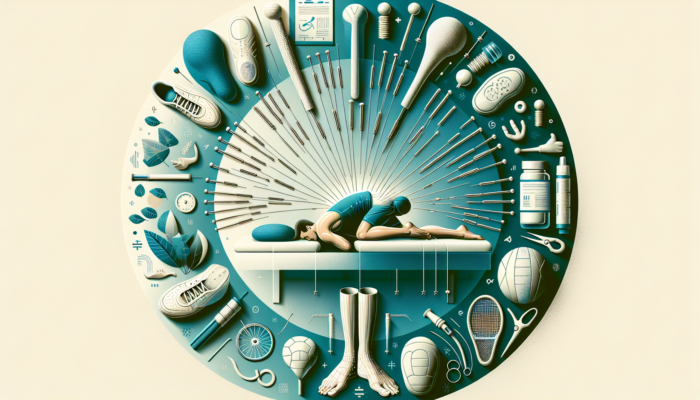Harness the Healing Potential of Acupuncture for Lasting Relief from Plantar Fasciitis
Understanding Plantar Fasciitis: Symptoms, Causes, and Implications

Plantar fasciitis is a prevalent and often debilitating condition that manifests through inflammation and discomfort in the plantar fascia, a resilient band of connective tissue that runs along the underside of the foot. This condition primarily targets the heel and arch, causing significant pain that can disrupt everyday activities and hamper mobility. Many individuals experiencing plantar fasciitis report sharp, stabbing sensations, especially when taking their first steps in the morning or after extended periods of sitting. Alternatively, some may endure a persistent dull ache that intensifies with physical exertion or prolonged standing.
The root causes of plantar fasciitis are multifaceted and may stem from various factors that exert undue stress on the plantar fascia. Common contributors include excess weight, insufficient foot support, engagement in high-impact sports, or jobs requiring prolonged standing. Additionally, foot structure plays a crucial role; individuals with flat feet or high arches are typically at an increased risk for developing this painful ailment. Understanding these symptoms and underlying causes is essential for recognizing how acupuncture for plantar fasciitis can serve as an effective method of relief.
Delving into Acupuncture: Mechanisms of Action and Health Benefits
Acupuncture is an ancient healing modality deeply rooted in the traditions of traditional Chinese medicine (TCM). This practice involves the precise insertion of ultra-fine needles into specific points across the body to stimulate the flow of Qi, or vital energy. The primary aim of acupuncture is to restore balance within the body and activate its natural healing processes. Recent studies have revealed that acupuncture can trigger the release of endogenous opioids, the body's own natural painkillers, making it particularly advantageous for those suffering from chronic pain conditions, including plantar fasciitis.
From a clinical perspective, acupuncture has demonstrated its ability to reduce inflammation and enhance blood circulation in painful regions. Research has shown that the stimulation of targeted acupoints can release neurotransmitters and other biochemical substances that aid in healing and diminish pain perceptions. By applying acupuncture for plantar fasciitis, practitioners harness these principles to effectively combat the underlying causes of discomfort, thereby facilitating recovery and restoring normal mobility.
Uncovering the Extensive Benefits of Acupuncture for Alleviating Plantar Fasciitis
The positive outcomes of utilizing acupuncture for plantar fasciitis are numerous, offering a holistic treatment alternative. Many patients report significant pain relief after just a handful of sessions, allowing them to resume their daily activities with greater ease and comfort. Acupuncture not only addresses pain but also targets the root causes of the condition, ultimately fostering improved foot health.
A standout feature of acupuncture is its non-invasive approach. Unlike surgical interventions or heavy reliance on pharmaceuticals, acupuncture provides a natural treatment option that can easily integrate into a comprehensive wellness regimen. Patients frequently experience fewer side effects compared to conventional medical treatments, making acupuncture a safer long-term strategy for pain management.
Furthermore, acupuncture promotes overall well-being by mitigating stress and encouraging relaxation—two crucial factors for individuals grappling with chronic pain. As patients find relief from their symptoms, many report enhancements in mood and overall life quality. Therefore, including acupuncture for plantar fasciitis in treatment plans can yield not only physical relief but also emotional and psychological benefits.
Enhancing Your Knowledge of Acupuncture as a Solution for Plantar Fasciitis

Crucial Acupoints for Targeted Relief from Plantar Fasciitis
Identifying essential acupoints is fundamental for optimizing the effectiveness of acupuncture for plantar fasciitis. Practitioners tend to focus on specific acupoints that correlate with the anatomy of the foot and lower extremity. Notable acupoints include Kidney 3 (Taixi), situated near the ankle, recognized for its ability to nourish the kidneys and alleviate heel discomfort. Another significant point is Spleen 6 (Sanyinjiao), located above the inner ankle bone, known for enhancing circulation and minimizing inflammation.
Additionally, the Liver 3 (Taichong) is an essential point that can be activated to relieve tension and promote relaxation in the lower limbs. Effectively targeting these acupoints can greatly boost the body’s inherent healing abilities, delivering substantial relief from the discomfort associated with plantar fasciitis.
Acupuncturists may also utilize points found on the hands or ears, as these regions are believed to reflect overall body health and can assist in managing pain relief. By understanding the connections between these acupoints and plantar fasciitis, practitioners can craft treatment plans tailored to the unique needs of each patient.
What to Expect During Your Acupuncture Experience for Plantar Fasciitis
Having a clear understanding of what to anticipate during an acupuncture session is crucial for individuals considering acupuncture for plantar fasciitis. Upon arrival, the acupuncturist will perform a comprehensive evaluation, discussing your medical history and specific symptoms in detail. This tailored approach ensures that the treatment plan effectively addresses your unique situation and concerns.
Once the treatment commences, patients typically lie comfortably as the practitioner skillfully inserts thin, sterile needles into designated acupoints. Most individuals report minimal discomfort during this process and often perceive only a slight prick or tingling sensation. The needles usually stay in place for about 20 to 30 minutes, during which patients are encouraged to relax and practice deep breathing techniques.
After the session concludes, many patients describe a sense of relaxation and a decrease in pain levels. While some may notice immediate relief, others might experience gradual improvements as treatment progresses. Maintaining open communication with your acupuncturist throughout the treatment journey is vital, as they can modify your treatment plan based on your progress and feedback.
Maximizing Treatment Results: Complementing Acupuncture with Other Therapies

Many practitioners endorse a comprehensive approach to treating plantar fasciitis to achieve optimal outcomes. By integrating acupuncture with additional therapeutic modalities, patients can significantly enhance the effectiveness of their overall treatment. For instance, physical therapy can complement acupuncture by providing targeted exercises designed to strengthen foot muscles and improve flexibility.
Moreover, incorporating podiatric solutions, such as custom orthotics, can offer additional support and alleviate strain on the plantar fascia. These orthotic devices can aid in correcting foot mechanics and promoting even weight distribution, thereby facilitating the healing process.
Furthermore, making lifestyle adjustments, including maintaining a healthy weight and selecting appropriate footwear, can further amplify the benefits of acupuncture. Patients are encouraged to engage in low-impact activities like swimming or cycling, which promote cardiovascular fitness without aggravating foot pain. By adopting a holistic approach that merges acupuncture with various therapies, patients can optimize their chances of achieving lasting relief from plantar fasciitis.
Real Patient Experiences: The Impact of Acupuncture on Plantar Fasciitis
Encouraging Success Stories: The Transformative Effects of Acupuncture on Plantar Fasciitis
The transformative potential of acupuncture for plantar fasciitis is best illustrated through authentic success stories from patients. Numerous individuals have shared their journeys, detailing their transition from chronic pain to substantial relief and emphasizing the profound impact of this ancient therapy. For example, Sarah, an avid runner, encountered debilitating heel pain that severely disrupted her training. After undergoing several acupuncture sessions, she noted a remarkable reduction in pain, enabling her to return to her passion for running and crediting her recovery to the expertise of her acupuncturist.
Another compelling narrative comes from Tom, who initially hesitated to try acupuncture due to a fear of needles. However, after experiencing persistent plantar fasciitis that made walking uncomfortable, he decided to explore this option. To his surprise, he found minimal discomfort during the sessions and reported a significant reduction in pain levels within just a few weeks. His experience highlights the importance of being open to alternative therapies.
These testimonials underscore the effectiveness of acupuncture in managing plantar fasciitis symptoms. Patients frequently express gratitude for regaining mobility and improving their quality of life, illustrating how acupuncture for plantar fasciitis can lead to remarkable healing outcomes.
Setting Realistic Expectations: Timelines for Improvement with Acupuncture
When beginning an acupuncture journey for plantar fasciitis, it’s essential to manage expectations regarding the timeline for improvement. While some patients may experience relief after just one or two sessions, others might require a more extensive treatment plan to achieve optimal results. Typically, practitioners advise a series of sessions, usually ranging from 6 to 12 treatments, depending on the severity of the condition and the individual's response to therapy.
Patients should also understand that acupuncture is not a quick fix but rather a holistic approach that necessitates patience and dedication. Various factors can influence the healing process, including the duration of symptoms, lifestyle choices, and adherence to complementary therapies. By maintaining realistic expectations and remaining committed to treatment, patients can enhance their chances of experiencing significant improvements over time.
Moreover, regular follow-up sessions can be beneficial to monitor progress and make necessary adjustments to the treatment plan. Open dialogue with the acupuncturist is crucial for establishing attainable goals and fostering a collaborative healing approach.
Coping with Initial Discomfort and Managing Potential Side Effects
While many patients find acupuncture for plantar fasciitis to be a comfortable experience, some may encounter initial discomfort or mild side effects. It’s important to recognize that experiencing some discomfort is a normal part of the process as the body responds to treatment. Some individuals may experience temporary soreness or bruising at the needle insertion sites, while others might feel fatigued or emotionally released following the session.
Practitioners often recommend gentle stretching and rest after treatment to manage these initial responses. Staying well-hydrated is essential, as it aids in flushing out any toxins released during the session. Most importantly, patients should feel empowered to discuss any concerns with their acupuncturist, who can provide reassurance and guidance to ensure a positive experience.
Although rare, some individuals may experience more pronounced side effects, such as dizziness or fainting. If such occurrences arise, it is crucial to inform the practitioner immediately. Understanding the potential for discomfort and equipping oneself with coping strategies can significantly enhance the acupuncture experience and contribute to a successful treatment journey.
Acupuncture for Plantar Fasciitis: Insights from Healthcare Professionals
Professional Perspectives: Expert Insights from Acupuncturists Specializing in Plantar Fasciitis
Insights from acupuncturists specializing in treating plantar fasciitis offer invaluable understanding regarding the therapy's effectiveness. Many practitioners emphasize the necessity of a personalized approach, as each patient presents unique symptoms and underlying factors. In interviews, acupuncturists often highlight the significance of blending traditional techniques with contemporary anatomical and physiological knowledge.
For instance, one acupuncturist stressed their practice of conducting a thorough assessment of a patient's gait and posture to inform their treatment strategies. This comprehensive evaluation enables them to identify specific areas of tension and pain, ensuring that acupuncture sessions are both focused and effective. They also underscore the importance of patient education, encouraging individuals to adopt lifestyle changes that can complement acupuncture therapy.
Moreover, many acupuncturists report high success rates among patients managing plantar fasciitis, attributing this to the therapy's ability to address both the physical and emotional dimensions of pain. By fostering a supportive and empathetic environment, practitioners can help patients feel more comfortable, ultimately enhancing the overall treatment experience.
The Vital Role of Acupuncture in Comprehensive Foot Health Management
Acupuncture plays a crucial role in promoting holistic foot health, especially for chronic conditions like plantar fasciitis. By targeting the root causes of pain and discomfort, acupuncture not only alleviates symptoms but also supports overall well-being. Practitioners frequently advocate for an integrative approach that incorporates acupuncture, nutrition, exercise, and lifestyle modifications.
Incorporating acupuncture into a broader health strategy can optimize foot biomechanics and functionality. For example, combining strengthening exercises with acupuncture can aid in restoring balance and flexibility in the feet, thereby reducing the likelihood of future injuries. Acupuncturists may also suggest dietary adjustments that promote tissue health and lessen inflammation, further amplifying the benefits of acupuncture for plantar fasciitis.
Ultimately, integrating acupuncture into a holistic approach to foot health encourages patients to actively engage in their healing process. By viewing foot health through a multifaceted lens, individuals can foster lasting improvements beyond the treatment room.
Current Trends and Research in Acupuncture Therapy
As interest in acupuncture continues to grow, ongoing research remains essential to validating its effectiveness in treating conditions like plantar fasciitis. Recent studies have explored the physiological mechanisms behind acupuncture's pain-relieving properties, illuminating its potential as a complementary therapy in pain management. Researchers are also investigating the optimal number of sessions and specific acupoints that could maximize results for patients experiencing plantar fasciitis.
Future trends in acupuncture therapy may encompass the integration of advanced technologies, such as electro-acupuncture and infrared therapy, to enhance treatment outcomes. These innovations could provide additional stimulation and lead to quicker recovery times for patients. Furthermore, as healthcare systems increasingly recognize the value of alternative therapies, acupuncture may become more widely accessible as part of comprehensive care plans.
In conclusion, the future of acupuncture for plantar fasciitis appears promising, with ongoing research paving the way for more effective treatment protocols and broader acceptance within the medical community. As practitioners refine their techniques and approaches, patients can look forward to even more innovative and effective methods for managing this challenging condition.
Acupuncture for Plantar Fasciitis: Practical Strategies for Success
Preparing for Your Initial Acupuncture Appointment: A Comprehensive Guide
Thorough preparation for your first acupuncture appointment is crucial to ensuring a positive and effective experience. Start by researching qualified practitioners who specialize in acupuncture for plantar fasciitis. Look for reviews and testimonials that provide insights into their expertise and therapeutic methodologies. It’s also wise to confirm their credentials and ensure they are licensed and experienced in treating foot-related conditions.
Before your appointment, compile a comprehensive list of your symptoms, medical history, and any medications you are currently taking. This detailed information will enable the acupuncturist to customize the treatment to meet your individual needs effectively. It’s advisable to wear loose, comfortable attire that allows easy access to the treatment areas and ensure you arrive well-hydrated to facilitate the process.
Additionally, consider bringing a journal to document your experiences, including any changes in symptoms or overall well-being following treatment. This record can be invaluable for both you and your acupuncturist in tracking progress and making necessary adjustments to your treatment plan.
Supporting Recovery: At-Home Care and Exercises to Reinforce Acupuncture Benefits
Incorporating at-home care and exercises is vital to maximize the benefits of acupuncture for plantar fasciitis. Simple stretching and strengthening exercises can significantly enhance flexibility and support the healing process. For instance, calf stretches and toe curls can help relieve tension in the plantar fascia and improve overall foot function.
Applying ice to the affected area can effectively reduce inflammation and alleviate pain following exercise sessions. Patients should also consider utilizing a foam roller or massage ball to release tight muscles in the feet and calves, which promotes better blood circulation and relaxation.
Maintaining proper foot hygiene is equally essential. Keeping your feet clean and moisturized can help prevent skin irritations and support overall foot health. Additionally, wearing supportive footwear with adequate arch support and cushioning can greatly improve symptoms and prevent recurrence.
By integrating these at-home strategies with acupuncture treatments, patients can cultivate a more comprehensive healing process and enhance their overall foot health.
Post-Acupuncture Care: Strategies for Sustaining Optimal Foot Health
After initiating your regimen with acupuncture for plantar fasciitis, it is crucial to prioritize foot health to prevent future issues. Continue practicing the exercises recommended by your acupuncturist, focusing on strengthening and stretching the muscles in your feet and calves. Consistency is vital for ensuring lasting results and minimizing the risk of re-injury.
Moreover, pay close attention to your choices in footwear. Opt for shoes that provide adequate support, cushioning, and stability. Avoid high heels or excessively flat shoes, as these can worsen foot pain and impose additional strain on the plantar fascia. Custom orthotics may also prove beneficial, particularly for individuals with specific foot mechanics or conditions.
Regularly reassess your activity levels and remain vigilant regarding any changes in your body. If you notice a recurrence of symptoms, consult your acupuncturist for further guidance. Incorporating foot care practices, such as soaking your feet and using appropriate topical treatments, can significantly contribute to overall foot health and well-being.
By prioritizing foot health post-treatment, patients can enjoy a more active lifestyle and reduce the likelihood of developing chronic conditions such as plantar fasciitis.
Acupuncture for Plantar Fasciitis: Frequently Asked Questions
Is Acupuncture Painful When Treating Plantar Fasciitis?
Most patients report experiencing minimal discomfort during acupuncture, often describing it as a slight prick or tingling sensation. The needles are incredibly thin, and many individuals find the overall experience to be more soothing than painful.
How Many Acupuncture Sessions Are Typically Required for Relief?
While some patients may feel relief after just 1-2 sessions, a typical treatment plan usually consists of 6-12 sessions, depending on individual symptoms and their response to therapy. Consistency is essential for achieving optimal results.
Can Acupuncture Help Prevent the Recurrence of Plantar Fasciitis?
While acupuncture can significantly alleviate symptoms and promote healing, ongoing self-care, including wearing proper footwear and engaging in regular stretching, is crucial to prevent recurrence. Regular follow-up sessions may also assist in maintaining foot health.
What Can I Expect After My Initial Acupuncture Session?
Following your first acupuncture session, you may experience relaxation and reduced pain levels. Some individuals note temporary soreness or fatigue, but these sensations typically dissipate quickly.
Are There Any Side Effects Associated with Acupuncture?
Most side effects, such as soreness at the needle sites or slight fatigue, are mild and temporary. Serious side effects are rare, but it is important to discuss any concerns with your acupuncturist.
Can I Continue Other Treatments Alongside Acupuncture?
Yes, many patients find that combining acupuncture for plantar fasciitis with other therapies, such as physical therapy or massage, can enhance overall results and facilitate recovery.
Do Insurance Providers Cover Acupuncture?
Coverage for acupuncture varies by insurance provider. It is advisable to check with your insurance company to determine if treatments for plantar fasciitis are included in your policy.
How Long Does Each Acupuncture Session Typically Last?
Each acupuncture session generally lasts between 30 to 60 minutes, encompassing both assessment and treatment time. The duration may vary based on individual needs and treatment protocols.
Can Acupuncture Be Used for Other Foot Conditions?
Absolutely! Acupuncture can be effective for various foot conditions, including bunions, heel spurs, and general foot pain. Consult your acupuncturist for tailored treatment options.
What Lifestyle Changes Can Support Acupuncture Treatment?
Incorporating regular stretching, maintaining a healthy weight, wearing supportive footwear, and engaging in low-impact exercises can significantly enhance the effectiveness of acupuncture for plantar fasciitis while promoting overall foot health.
Connect with us on Facebook!
Presented By: Plantar Fasciitis Therapy
The Article: Acupuncture for Plantar Fasciitis: Symptoms and Root Causes appeared first on https://mcrtherapies.co.uk
The Article Plantar Fasciitis: Understanding Symptoms and Causes of Acupuncture appeared first on https://mcrtherapies.com
The Article Plantar Fasciitis: Explore Acupuncture’s Role in Symptoms and Causes Was Found On https://limitsofstrategy.com


Your exploration of plantar fasciitis truly resonates with me, as I’ve had my own struggle with this condition that initially felt isolating. The sharp, stabbing pain during those first morning steps is something I thought I’d never get used to. Understanding the symptoms and root causes, as you’ve outlined, is crucial — it’s like we need to educate ourselves in order to combat this common yet often misunderstood issue.
Your experience with plantar fasciitis highlights the shared struggle many of us face with this condition. It’s striking how that stabbing pain can make even the simplest tasks feel daunting, particularly in the morning when our bodies haven’t fully warmed up.